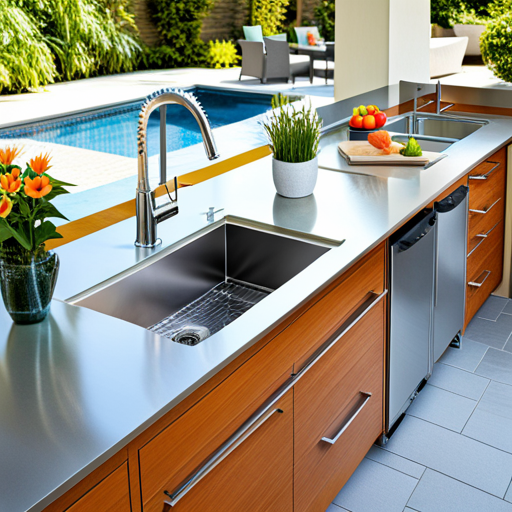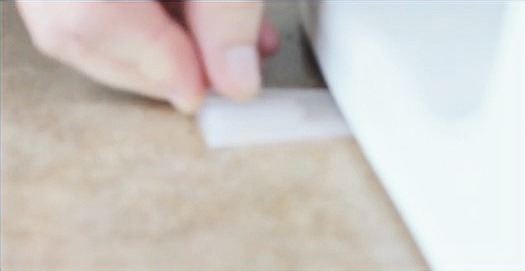Last Updated on June 14, 2024 by John Coleman
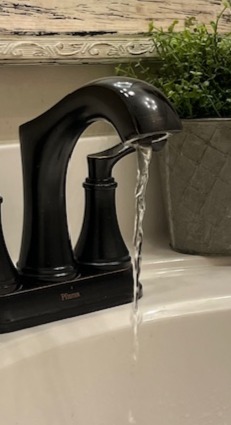
Have you ever been in the shower and experienced a sudden drop in the water pressure; making it difficult to wash the soap off or get the shampoo out of your hair? Or maybe you’ve noticed that it takes longer for your washing machine or dishwasher to fill up with water. Low water pressure can be really frustrating and inconveniencing. However, there are some DIY steps that you can perform to improve your water pressure. This guide will lead you through how to investigate and potentially fix the cause of low water pressure in your home. It will also identify scenarios that require the expertise of a professional plumber.
If you purchase through links on this site, we may earn a small commission. See our affiliate disclosure.
Understanding What Causes Low Water Pressure in Your House
Signs of Low Water Pressure in Your Home
Spotting the early signs can help sort things out quicker:
- Shower heads with weak water flow or unable to rinse off soap properly
- Washing machines or dishwashers taking too long to fill up with water
- Faucets and taps produce a slow trickle of water instead of a steady stream
- Water heating systems struggling to heat up enough water for your needs
How to Accurately Check the Water Pressure in Your Home?
To accurately check the water pressure in your home, you will need a water pressure gauge.
Here’s how to do it:
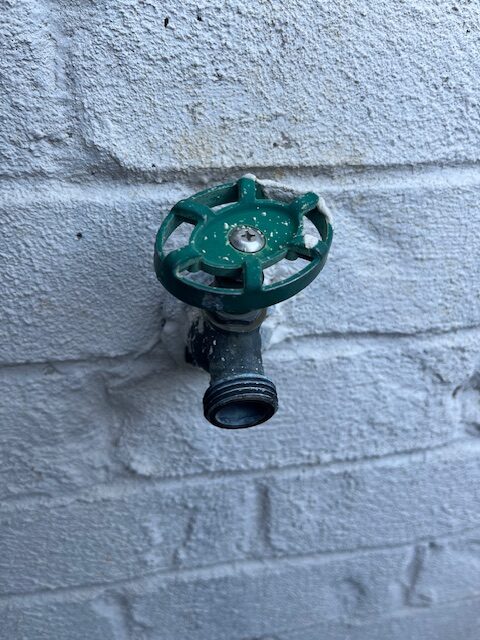
- Locate an outdoor faucet that is easily accessible or an indoor faucet.
- Remove any attachments, such as a sprayer or filter, from the spout.
- Attach the pressure gauge to the faucet, making sure it is securely attached.
- Turn on the faucet and let the water run for a few seconds.
- Once the water has flushed out, take note of the reading on the pressure gauge. The ideal range for residential homes is between 40-80 psi.
- If the reading falls below 40 psi, you may have low water pressure in your home.
Causes of Low Water Pressure and DIY Fixes
There are various factors that could be causing low water pressure in your home. Some may need to be inspected and addressed by a professional plumber. However, below are a few causes of low water pressure in your house and potential DIY fixes you can try before calling a plumber. Keep in mind, if you are uncomfortable with performing any of these tasks, it’s best to go ahead and call a plumber.
Problem 1: Municipal Water Supply Issues
Sometimes low pressure is due to a problem with your community water supply. It could be that pressure from the water supply had to be decreased to allow for maintenance or upgrades. In this case, your water pressure will likely return once the maintenance is completed.
Fix: Contact Your Water Provider
Before you go through the trouble of trying to diagnose why your water pressure is low. It would be worth contacting your municipal water supply company. They may be able to provide more information or send someone to inspect the water supply in your area. They may also be able to offer suggestions on how to improve water pressure in your home. It is important to rule out any potential issues with the public water supply before assuming the problem is specific to your home.
The problem could be as simple as water conservation measures in your community that require water pressures to be reduced to all homes in the area where you live. This would reduce overall water consumption and leave you having to deal with low water pressure.
Problem 2: Faulty Water Pressure Regulator
This valve’s job is to keep the incoming water pressure from your main line in check. If it’s busted or acting up, you might end up with low water pressure all over your house.
Fix: Adjusting Water Pressure Regulator
You can adjust the pressure regulator valve yourself, although caution and a bit of plumbing knowledge are advised. Simply locate the water pressure regulator by your water meter. It will have a bell shape with a screw on top of it. The screw on top of it is what is used to adjust the pressure. Turning the screw clockwise will increase water pressure while turning it counter-clockwise will decrease the pressure. Significant to note, the current settings (prior to any adjustments) are locked with a nut that will need to be loosened before any adjustments can be made.
Warning: You should only make adjustments to the pressure regulator if you know how to make the adjustments. Increasing the pressure too high could cause damage to the plumbing in your home.
Problem 3: Leaks in the Plumbing System:
A crack or gap in your pipes can allow water to flow outside of the pipe which decreases the pressure inside the plumbing lines of your home.
Fix: Locate leaks and Fix if Accessible
Methodically inspect your plumbing lines, paying close attention to consistent wet or damp spots around your yard or in your home. While inside your home, listen closely to see if you can hear water dripping within your walls. With adequate plumbing knowledge, you could repair or replace the damaged pipe.
Problem 4: Clogged Pipes or Fixtures
Minerals and debris can build up inside pipes and fixtures which block the flow of water which can restrict the flow of water and pressure.
Fix: Inspect Fixtures and Pipes
Check each plumbing fixture (bathtub, showers, sinks) one at a time by turning them on full flow in both the hot and cold position (Tip: Don’t turn them all on at once because that will likely make all of them appear to have low water pressure). At each fixture, take note if there is a significant pressure difference between the hot and cold settings.
After you have checked each fixture, go back to the ones that appeared to have low pressure and perform a more in-depth inspection. This would consist of removing the fixture and checking for clogs and debris. If any are present, then you can use an old toothbrush and vinegar to clear the debris or mineral deposits. You should also check the water supply lines for any clogs that may be present.
Problem 5: Corroded Pipes
For older homes with metal plumbing, corroded pipes may be the culprit behind low water pressure. The corrosion in the pipes decreases the amount of space for the water to move within the pipes. Corrosion can also dislodge within the pipes and cause build-up in a specific area of the pipe which would reduce water pressure and could eventually completely block the pipe.
Fix: Replace Corroded Pipes
In this case, it is best to replace the affected pipes. Having corrosion and metals in the water supply line can be hazardous to your health. This can be a DIY fix if you have plumbing knowledge. However, if you don’t have experience replacing metal pipes, it is best to let a licensed plumber replace them.
Problem 6: Water Meter Shut-Off Valve
The water meter valve controls the water going to your house. It’s important that this valve is opened completely.
Fix: Make sure your water meter shut-off valve is completely open
Look around your yard and you will likely find a cover that looks similar to the one below.

When you open the cover, you will see a valve located right next to your water meter that controls the water flow to your home. The piece I am pointing to in the picture is the shut-off valve. If the raised part of this valve does not align straight in the same direction as the pipe, it is either partially or completely closed and your water pressure is not going to be very strong. This sometimes happens if you have had repairs to your plumbing that required completely shutting off the water to your home.
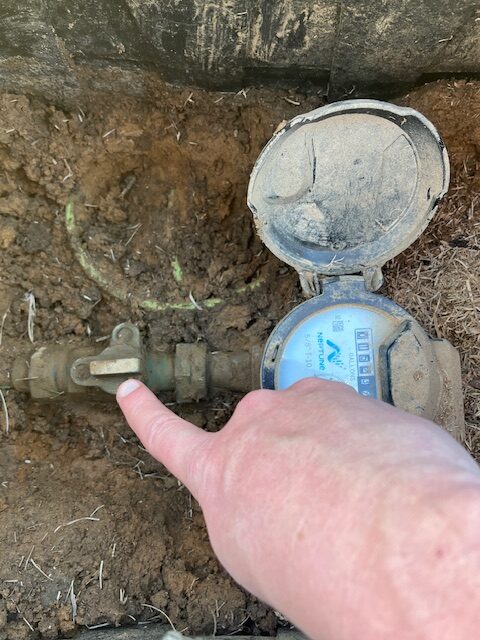
Problem 7: Closed or Partially Closed Shut-Off Valves Near Fixtures
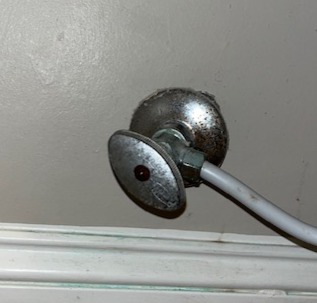
Valves near the fixtures in the home can sometimes be accidentally closed or partially closed, resulting in lower pressure throughout your home.
Fix: Check and Ensure the Shut-off Valves are Completely Open
Be sure all shut-off valves near the affected fixtures are completely open. These valves control water flow to individual fixtures and may have been accidentally turned off. To check to see if it is completely open, gently turn the valve counter-clockwise until it is completely open.
Problem 8: Issues with Water Heater
Fix: Inspect Hot Water Heater for Sediment
Sometimes low water pressure; specifically with the hot water can be the result of sediment build-up inside the hot water heater. If this is the case, the hot water heater needs to be flushed. If you are not sure how to check your hot water heater, it’s okay to call a professional to complete an inspection.
Problem 9: Underperforming Well Pump
If your home relies on a well for water supply, the pump may not be pumping at peak pressure and could be in need of repair.
Fix: Inspect the Well Pump
If you have a well, check the pressure gauge on the well pump. It should read between 40 and 60 psi. If it is reading lower than this, the well pump may need to be adjusted, repaired, or replaced. If you see that the psi is lower than above, the well pressure switch may need to be adjusted. If you don’t have experience adjusting a well pressure switch, it would be better to contact a professional to avoid damaging the pump and end up costing more.
Problem 10: Water Saving Aerators in Fixtures
Most faucets, showerheads, and bathtub spouts are sold with water saving technology. In many cases, it is in the form of a small aerator that is inserted into the base of the fixture that restricts the flow of water. If you noticed a change in water pressure after replacing a fixture, the presence of an aerator may be contributing to your problem.
Fix: Remove the Water-Saving Aerator
Consider removing a water-saving aerator from faucets and showerheads. This will increase the amount of water flowing through your fixtures.
- Improper Sized Pipes: If the pipes in your home are too small, they may not be able to handle the volume of water needed for proper pressure. You may see this in homes that have additional rooms or areas added on to the existing home. The original plumbing may have been installed to support the need of the original home and did not take into account the possibility of an addition being added.
- Malfunction of Water Softener: If you have a water softener, it may not be functioning properly and could be reducing the flow of water throughout your home.
- Changes in Elevation: If your home is located at a higher elevation than the water source, it can result in lower pressure. This is especially common in mountainous areas.
If you purchase through links on this site, we may earn a small commission. See our affiliate disclosure.
When to Call a Professional
There are always going to be jobs that are beyond your DIY skill set (and that’s okay). You have to recognize when it is time to call a professional. Below are some instances when a professional plumber should be called.
Persistent Pressure Problems
If the pressure remains stubbornly low despite your best DIY efforts, professional tools and expertise are required.
Unexplained Sudden Drops
Sudden drops in water pressure without a clear reason could point to a hidden leak or break within your plumbing system. A plumber has the tools to quickly diagnose and fix the problem.
Signs of Water Damage
Stains or actual damage from water without an obvious source are red flags that should prompt you to call a professional. Letting these types of symptoms go will likely result in further damage and even more costly repairs. Go ahead and get it assessed and fixed.
Professional Repairs and Upgrades
There are some jobs that we as DIYers can handle but it is important to acknowledge our limitations and access to certain specialty tools. Professionals come equipped with a higher level of knowledge and specialty tools that allow them to take the diagnostics and fixes to the next level. Here is a list of some of those fixes that are probably better off performed by a professional plumber:
Services a Plumber Can Offer
- A thorough pipe inspection using cameras to locate obstructions or damage
- Fine-tuning or replacing a faulty pressure regulator
- Installation of a water pressure booster pump, particularly useful if you reside in areas with naturally low municipal water pressure
- Replacement of undersized or corroded pipes
- Inspection of water softener
- Diagnose possible water pressure solutions for homes at higher elevation
- Determine if your home has properly sized plumbing to provide adequate water pressure.
Conclusion
The DIY steps mentioned above will help you troubleshoot minor water pressure issues. However, if you have performed the DIY tasks mentioned in this article and the problem persists, it is crucial to seek professional help. Plumbers have the necessary tools and expertise to accurately diagnose and fix underlying problems that may be causing low water pressure in your home. Remember, timely repairs can save you from further damage and costly repairs in the long run. Balancing DIY know-how with the expertise of a professional is key to maintaining a healthy plumbing system.
Frequently Asked Questions
Why is my water pressure suddenly low?
There are many possible reasons for low water pressure in a home, such as clogged pipes, faulty pressure regulators, or an issue with the municipal water supply. It’s important to investigate and address the specific cause to restore proper water pressure.
Where is the water pressure regulator located in a house?
Typically, the water pressure regulator can be found near the main shut-off valve in a home. It may also be located near the water meter or at the point where the main water line enters the house.
Do all homes have a water pressure regulator?
No, not all homes have a water pressure regulator. It is typically found in newer homes or those with high water pressure from the municipal supply.
Can I adjust my water pressure regulator myself?
It is generally not recommended to adjust the water pressure regulator yourself as it can affect the overall plumbing system and cause further issues. It’s best to consult a professional plumber for proper adjustment.
How often should I check my water pressure?
It’s a good idea to check your water pressure periodically, especially if you notice significant changes or issues with low pressure. It can also be beneficial to regularly check for leaks .


